Without doubt there is one question I get asked by customers time and time again.
And no it’s not, “How much is cleaning my carpets or upholstery going to cost?”
That doesn’t seem to be a major concern.
It seems that a lot of people, especially those with new carpet or upholstery are more worried about how long their furnishings will last.
What I have found, is that they want to know how best to look after them. Most people do want to get to maximise the lifespan of them if they can.
As you can imagine. There is a lot of confusion out there in relation to this and depending on who you ask, will depend on the answer you get.
So in this article I’m going to answer the no 1 question I get asked which is…
How often should you clean your carpet or upholstery?
Like I said before, depending on who you ask will get you a different answer. In some cases it even depends on the economic benefit to the person answering the question.
So lets take look at some of the common answers to this question that people get told.
1. You shouldn’t get your carpets cleaned for at least 3 years.
It is amazing how many times I have heard this one. The funny thing is when I ask the customer who it was that told them this nonsense. The answer is always the same.
“The store that sold me the carpet”
If you know anything about cleaning carpet or upholstery, you’d know this is really bad advice. But unfortunatley many people believe it and after 5 years of no cleaning…
Well, the appearance of the carpet has usually gone past the point of no return.
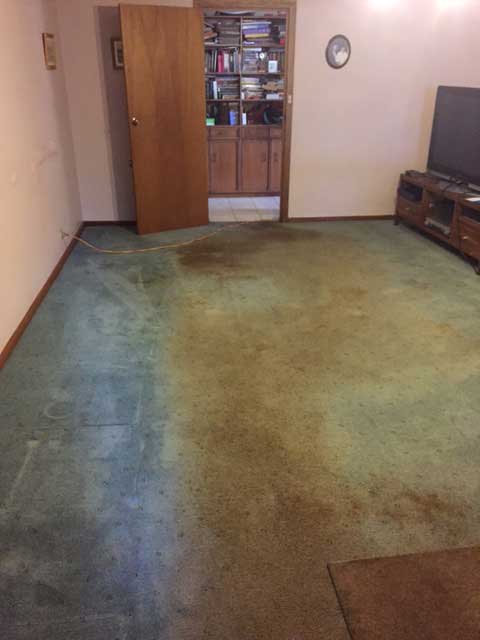
So you have to ask yourself why do these carpet retailers give out this kind of advice?
Now call me cynical, but I wonder if this could have anything to do with hoping that their customers carpets will wear out quicker?
This of course would mean they would have to replace them more often.
Over the long run this kind of advice would lead to an increase in carpet sales.
Or like I said, am I just being cynical?
It does appear to be standard industry advice to the consumer though, so be wary who and what you believe.
2. Don’t get them cleaned. They’ll re soil quicker and you’ll have to clean them more often.
This of course is just laughable. Usually when I hear this one it has come from well meaning friends or relatives. It seems to be a bit of an urban myth and would stem from other peoples poor carpet cleaning experiences.
In a lot of cases I think carpet dry cleaning is the culprit, but there are exceptions to that with some steam cleaning companies having no idea either..
Unfortunatley, the dry cleaning method is a prime suspect when it comes to carpets resoiling. This method involves using carpet cleaning bonnet pads that scrub the top of the carpet.
unfortunately though this method leaves residue in the carpet.
This can be from the chemicals used in the process or from soils and stains trapped in the carpet.
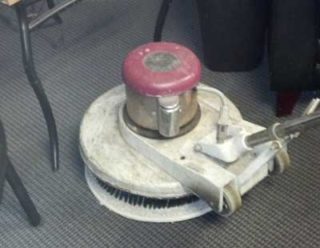
These soils that are trapped deeper down can’t be fully removed by this method. They can rise or “wick” to the surface as the carpet dries.
These residues now stuck in the surface of the carpet then tend to attract even more dirt to them.
Now, as I stated before, it’s not always just the dry cleaning method that is the cause.
Inexperienced carpet cleaners using the hot water extraction process or people just wanting to hire their own carpet hot water extractor machine and do their own carpets, can also be a problem.
It is not uncommon for them to put carpet cleaning detergent into the rinse tank of their machine.
This is then rinsed through the carpet during the cleaning process. It remains in the pile and causes it to become sticky.
As is the case with the dry cleaning method it then attracts dirt and leads to rapid resoiling of the carpet.
Another cause of this can be the stripping out of the carpet stain protection treatment in the carpet.
Again this is usually due to the operators inexperience. When faced with a heavily soiled carpet. The first thing they tend to reach for is a stronger cleaning chemical. These usually tend to have a high ph.
Carpet stain protection treatments like Scotchgard or Teflon DO NOT like high ph.
It strips the chemical out during the cleaning process.
This of course then leaves the carpet more vulnerable to soiling. Vacuuming is not as effective and tracking lane marks occur.
All of these poor cleaning practices then perpetuate the myth that getting your carpets cleaned is bad for them.
3. Only get them cleaned if you can see the dirt building up in the walkways.
Again, this is poor advice. By allowing the dirt to build up to a point where you can see it in the walkways, you run the risk of traffic lane marks.
This is the worst thing for ruining the appearance of your carpet.
![]()
It is very hard if not impossible to get rid of once it has occured and I’ll explain why. The cause differs depending on the type of carpet fibre so we’ll take a look at each type.
Nylon carpets
Nylon is a very resilient fibre that was first manufactured by Dupont in 1935.
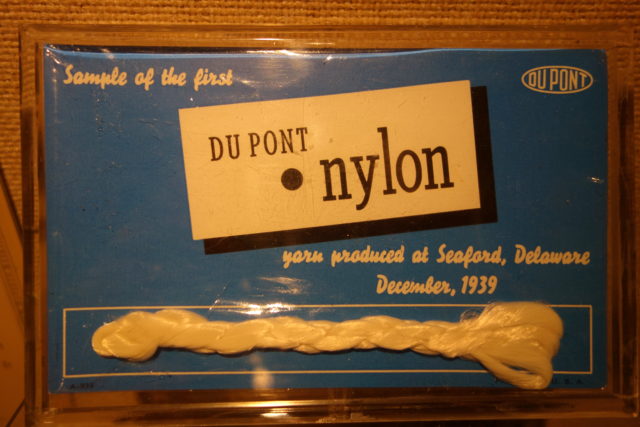
Untreated nylon carpets (with no stain protection treatment) have minute cracks in the fibres.
These minute cracks are where the dye used to colour the carpet lodges in the dyeing process. With a light coloured carpet maybe only 5% of these cracks become filled with dye.
This then leaves 95% of these cracks susceptible to absorbing oil and fine soils into them.
This is what causes the distinct grey traffic lane marks. It is because the dirt has worked its way into where the carpet dye sits. Removing it becomes almost impossible unless you want to actually remove the carpet dye at the same time.
This is why these days most nylon carpets are stain protected. It is applied during the manufacturing process and “baked” into the carpet fibres.
Their primary function is to protect against this traffic lane marking.
Wool
Wool fibres tend to be more resiliant but are still susceptible to traffic lane marks. Wool before it is processed contains lanolin and has a protective waxy coating on the fibres.
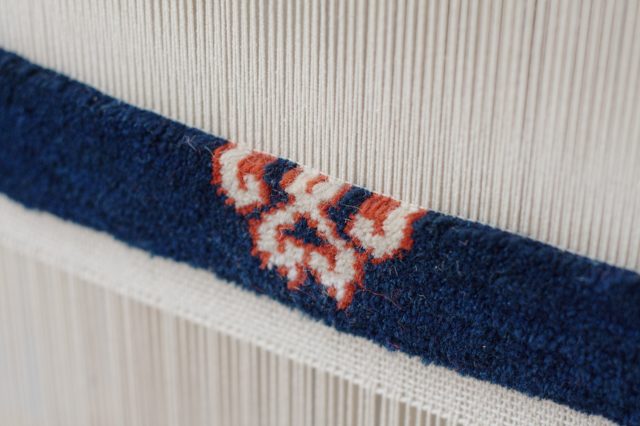
During the manufacturing process this lanolin and waxy layer are removed. This is so that the carpet can be dyed to the colour required.
This removal of what is basically a natural barrier to oil entering the fibre, makes wool actually “hungry” for oil. This is why it is so hard to remove once it has got in.
So if you leave cleaning your wool carpets until you can see the dirt, well its usually too late by then.
Olefin or polypropylene carpets
These types of carpets despite being durable and almost stain resistant, love oil.
Leave them too long between cleans or have them near an area like a kitchen where oil is present. You are asking for trouble.
They are made from oil and so have an affinity for it and the oil molecules bond to the fibres over time.
This makes removing tracking lane marks almost impossible.
Acrylics and Polyesters.
Both these fibres can be a real problem if not cleaned on a regular basis. They tend to soil quickly and the fibres suffer from crushing. They generally have poor resilience.
Acrylics, like polypropylenes, also have an affinity for oil. It becomes difficult to remove once tracked in.
So how long should you wait before getting your carpets cleaned?
Well as you can see from the information above, you shouldn’t leave it too long.
A few factors come into play though and these include.
- The type of carpet
- The amount of traffic
- Kids
- Pets
It’s hard to recommend an exact time to wait before getting your carpet cleaned.
If you are a single person living alone then your carpets will soil a lot slower than that of a family with kids and pets.
You should get your carpets cleaned every 6- 12 months depending on the traffic. Even the carpet warranties themselves usually recommend every 12 months.
As we have seen already in this article. Leaving the carpet too long between cleans will promote traffic lane marks.
There is also another often over-looked reason for getting your carpets cleaned.
The removal of allergens!
I personally think this is one of the most important reasons for getting your carpets and upholstery cleaned. Many breathing and skin complaints probably wouldn’t occur if it was done more often.
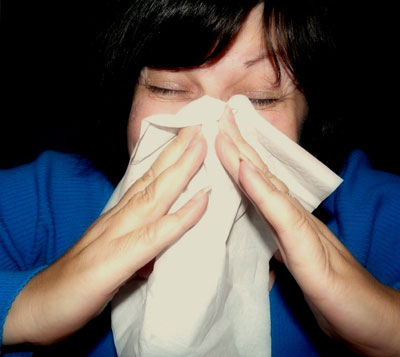
If you can control the dust mites that thrive in your furnishings, it makes all the difference. To do that though you have to get them cleaned at least every 6 months.
You can read more about Dust mites, their effects and their control in this article:
How To Get Rid Of Dust Mites: 10 Things You need to Know
Conclusion
So, as you can see, the question of how often you should clean your carpets and upholstery is one that will get you a different reply depending on who you ask.
I think its plain to see what happens if they aren’t cleaned on a regular basis. Not only are they harder to clean but there are a whole host of additional problems that can occur as well.
What you have to remember is that you are dealing with what is essentially a large piece of fabric. Especially in the case of carpets.
Like any fabric, dirt and soil has to be periodically cleaned from it or it will work its way into the fibres and start to look pretty ordinary after a while.
Can you imagine if you didn’t clean your bedsheets or other linen in your home for a year?
Well with carpets and upholstery it is really no different. You walk on carpets constantly and sitting on your upholstery especially with bare skin deposits oil and sweat onto them.
Try an experiment of placing a white towel on a part of your carpet or upholstery and see how long you can go before you have to clean it.
I think you’ll be quite suprised.
So, how often should you clean your carpet or upholstery?
Every situation is different of course but they need to be cleaned on a regular 6 – 18 month basis! It just depends on the traffic.
Don’t let them go too long!
Thanks for reading this post and I hope it’s provided some value. What are your thoughts? Are you someone who gets their carpets and upholstery cleaned regularly of do you just let them go and hope for the best?


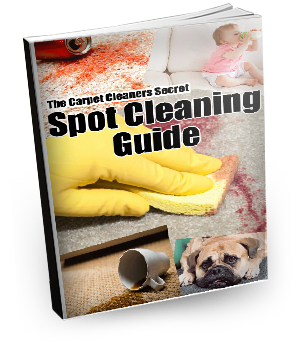
Comments on this entry are closed.